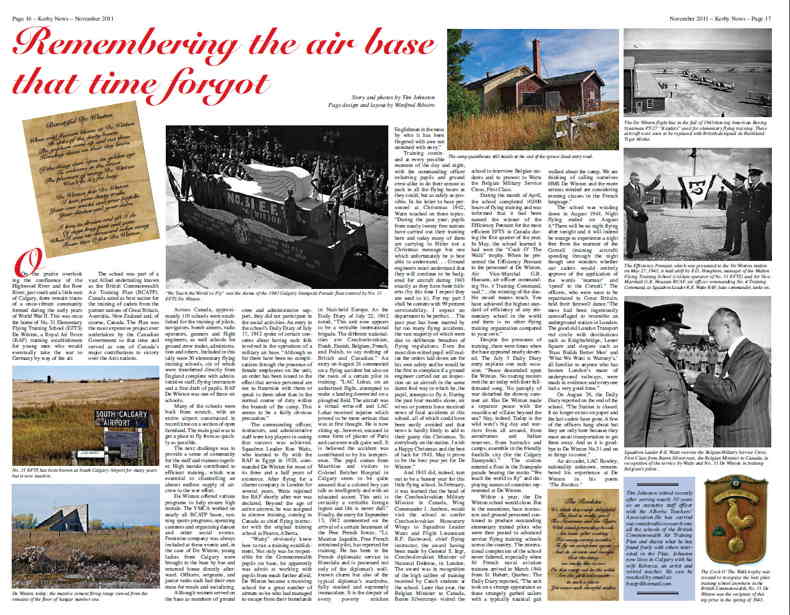 BCATP
BCATP  |
Lancaster
|
Media
|
Lancaster
|
Media
 BCATP
BCATP  |
Lancaster
|
Media
|
Lancaster
|
Media
BCATP Schools and Facilities in Alberta
British Commonwealth Air Training Plan
31 EFTS (RAF De Winton) was located thirteen kilometres east of the town of De Winton, near the confluence of the Highwood and Bow Rivers. The station was built during the late winter of 1940 and spring of 1941.
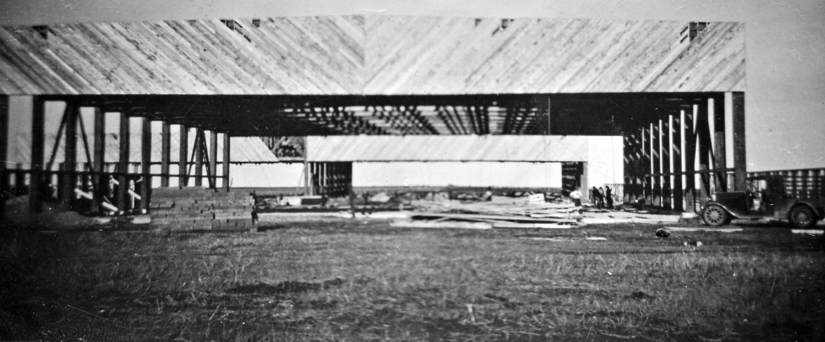
The RAF personnel originally posted to the school travelled from Greenock, Scotland to Reykjavik, Iceland aboard an Irish cattle boat and then sailed to Halifax aboard the S.S. California, a British ocean-liner that had been requisitioned by the military in 1939 and turned into a troopship. It was later sunk by enemy aircraft in 1943. A five day train trip brought them to Calgary. |
|
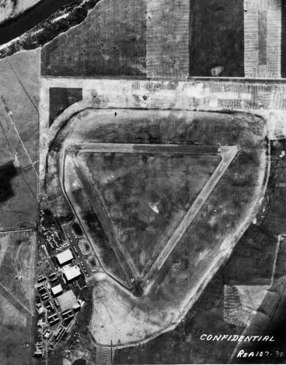 RCAF De Winton Like most EFTS's, De Winton began its operations with the Canadian-built Tiger Moth aircraft but during the summer of 1942, the Boeing Stearmans from No. 36 EFTS arrived from Pearce where they had been used at 36 EFTS prior to it being closed. |
No. 31 Elementary Flying Training School began operations on June 18th 1941. The airfield had the usual BCATP triangular runways arrangement, two hangars, and the usual barracks, mess halls, and other BCATP base support buildings. Grass runways at Gladys and asphalt runways at Shepard were used as auxiliary landing facilities. "Watty," as S/L Watts was known, had been a senior instructor at 36 EFTS at Pearce and was appointed the commanding officer. He obviously knew how to run a training establishment. Not only was he responsible for the Commonwealth pupils at No. 31, he apparently was adroit at working with pupils from much farther afield. De Winton became a receiving school for a great number of potential pilots who had managed to escape from their homelands in Nazi-held Europe. As the school's Daily Diary of July 22nd 1942 noted, "This unit now appears to be a veritable international brigade. The different nationalities are Belgian, Dutch, Danish, French, Czechoslovakian and Polish, to say nothing of British and Canadian." 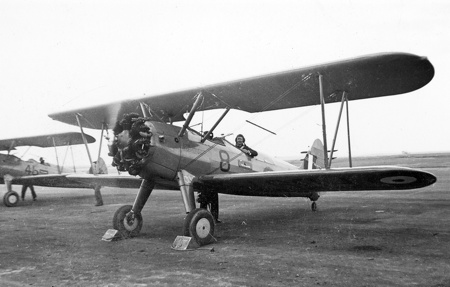 Boeing Stearman at 31 EFTS De Winton. |
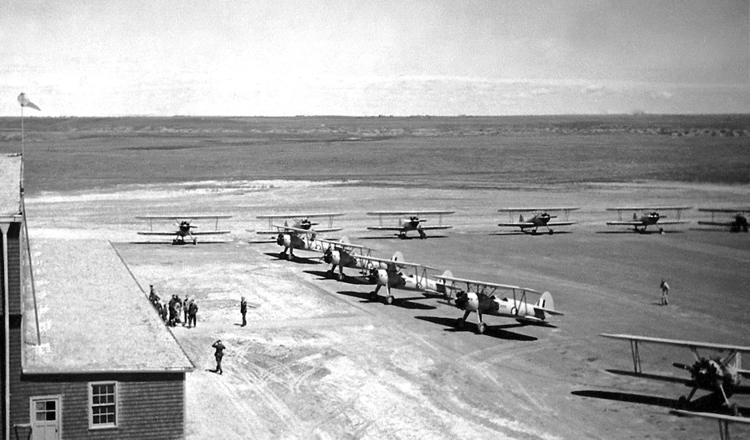
An entry on August 24th commented on a flying accident. "LAC Lohar, on an authorized flight, attempted to make a landing downwind on a ploughed field. The aircraft was a virtual write-off and LAC Lohar received injuries that proved to be more serious than was at first thought. He is now sitting up, however encased in some form of plaster of Paris and can even walk quite well. It is believed the accident was contributed to by his inexperience. The pupil comes from Mauritius and visitors to Colonel Belcher Hospital in Calgary seem to be quite amazed that he speaks with such an educated accent. This unit is certainly a veritable foreign legion and life is never dull."
Another entry on September 13th 1942 referred to the arrival of a certain lieutenant of the Free French forces. "Lt Maurice Jaquelin, Free-French untrained pilot, has reported for training. He has been in the French diplomatic service in Honolulu and is possessed, not only of the diplomat's well-known charm but also of the typical diplomat's wardrobe, fully stocked and supremely immaculate. It is the despair of every poverty-stricken Canadian and Englishman in the mess by whom it has been fingered with awe not unmixed with envy."
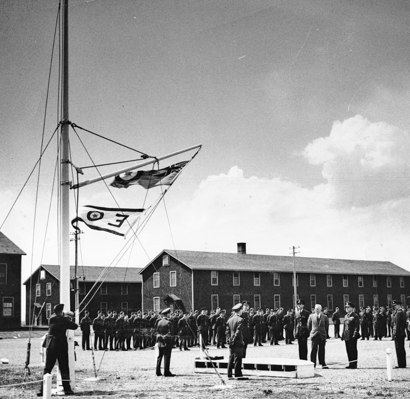 31 EFTS parade square. |
Training continued at every possible moment of the day and night with the commanding officer exhorting pupils and ground crew alike to do their utmost to pack in all the flying hours possible and as safely as possible. In his letter to base personnel in the Christmas 1942 issue of "The Gremlin," the school's paper, S/L Watts touched on these topics amongst others, writing, "During the past year, pupils from nearly twenty free nations have carried out their training here and today many of them are carrying to Hitler, not a Christmas message, but one which unfortunately he is best able to understand. "Ground engineers must understand that they will continue to be badgered for aircraft during 1943, exactly as they have been hitherto (by this time I expect they are used to it). For my part, I shall be content with 99 percent serviceability. I expect no department to be perfect. "The past year has been marred by far too many flying accidents, the vast majority of which were due to deliberate breaches of flying regulations. Even the most dim-witted pupil will realize the orders laid down are for his own safety and he would be the first to complain if a ground engineer carried out an inspection on an aircraft in the same damn fool way in which he, the pupil, attempts to fly it. |
"During the past four months alone, six wives or parents have received news of fatal accidents at this school, all of which could have been easily avoided and that news is hardly likely to add to their gaiety this Christmas*.
"To everybody on the Station, I wish a Happy Christmas and the best of luck for 1943. May it prove to be the best year yet for De Winton." As winter approached, the agreed upon cold weather modifications for the Stearmans had not arrived. The most critical of these was a canopy for the instructor and student. At No. 32 EFTS (Penhold), Archie Pennies' course #64 was the last to train in the open cockpit Stearmans there. To do so, the airmen were issued with leather face masks to prevent freezing their skin. With the full onset of winter, the lack of a canopy on the Stearmans became a problem that could not be solved and during November, these "Lend-Lease" aircraft were returned to the United States. In early 1943, the Stearmans at 31 EFTS were replaced by Fairchild Cornells. |
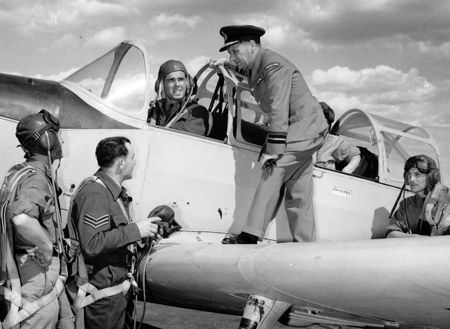 Czech officer and Cornell at 31 EFTS. |
One pilot graduate of No. 31 EFTS who became very well known post-war was Arthur Hailey, author of the 1950's and 1960's novels Hotel, Airport, and Runway Zero-Eight.
In 1941, as a young student pilot from England, Hailey was afflicted with airsickness during most of his early flight training. He was scheduled to be 'washed-out'. But a perceptive Instructor allowed Hailey to repeat the Elementary Flying Course and he successfully overcame his problem. He went on to receive his wings at Service Flying Training School, and later flew fighters in the Middle East and transport aircraft in India.
It should be noted that, like almost all the EFTS's in Canada, No. 31 became civilian operated and during the summer of 1942, civilians and their families arrived from their former base at Malton, Ontario. The Toronto Flying Club had operated and administered No. 1 EFTS at Malton until that school was closed due to flying congestion in the Toronto area. Of course, the Royal Air Force remained in charge and responsible for the flying curriculum and accreditation. Most of the civilian personnel of the Toronto Flying Club and their families found accommodation in and around the village of De Winton.
The school closed on 25 September 1944, as did RCAF Detachments Gladys and Shepard. Following the closure of the station, one or perhaps both of the former 31 EFTS De Winton hangars were taken down and re-assembled in downtown Calgary, serving as the transit system's 'bus-barns' until 1988. |
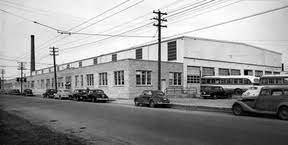 De Winton hangar repurposed as a bus barn in downtown Calgary. |
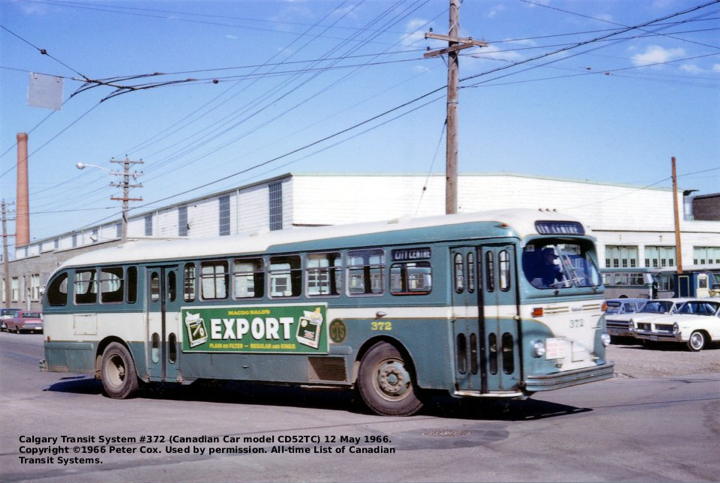
|
Beautiful De Winton
When wild flowers bloom at De Winton In spite of the dusty breeze The gophers come up and eat them Kneeling down on their tiny knees If the daisy dare open its golden eye To welcome in the dawn The pleasure of seeing De Winton Won't be it's for long De Winton fair De Winton I love your dusty trails Your cow tracks and your pitfalls Your ditches and your dales I love to dream and oft I do Of days long past and gone When I was six thousand miles away From thee O fair De Winton |
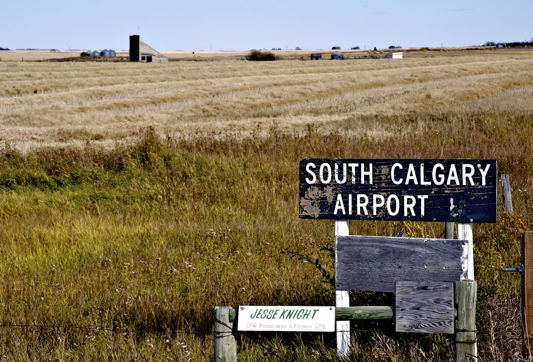 |
On the prairie overlooking the confluence of the Highwood River and the Bow River, just south and a little east of Calgary, there remain traces of a once-vibrant community formed during the early years of WWII. This was the wartime home of No. 31 Elementary Flying Training School (EFTS) De Winton, a Royal Air Force (RAF) training establishment for young men who would eventually take the war to the enemy by way of the air.
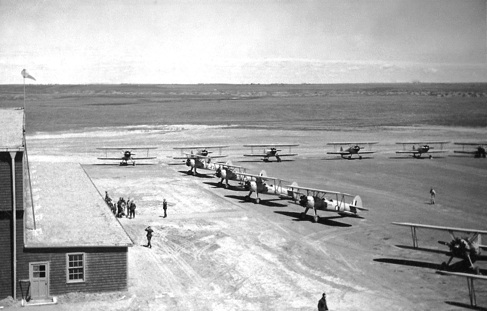 American Boeing Stearman PT-27 "Kaydets" used for elementary flying training. These aircraft were soon to be replaced with British-designed de Havilland Tiger Moths. |
RAF De Winton was part of a vast Allied undertaking known as the British Commonwealth Air Training Plan (BCATP). Canada acted as host nation for the training of young men who came from the partner nations of Great Britain, Australia, New Zealand and, of course, Canada. The Plan was the most expensive project ever undertaken by the Canadian Government to that time and served as one of Canada's major contributions to victory over the Axis nations. Across Canada, approximately 110 schools were established for the training of pilots, navigators, bomb aimers, radio operators, gunners and flight engineers, in addition to schools for ground crew trades, cooking and administration. Included in this tally were 30 elementary flying training schools, six of which were transferred directly from England complete with administrative staff, flying instructors and a first draft of pupils. RAF De Winton was one of these six schools. |
Many of the schools were built from scratch, usually upon a section of farmland that was cleared and upon which an entire airport was constructed in record time. The main goal was to get a place to fly from as quickly as possible and then to start providing a sense of community for the staff and trainees together. It was thought that high morale would result in efficient training and that would help channel an almost endless supply of aircrew, primarily to England, to achieving ultimate victory.
Lots of programs were in place to ensure high morale. Messes for officers, sergeants and other ranks were active. The YMCA worked on nearly all BCATP bases running sports programs, operating canteens and organizing dances and other social events. Serious efforts were made to ensure that feminine company was included at base dances. In the case of De Winton, young ladies from Calgary were brought to the base by bus and returned home directly afterward. But women also served on the bases as members of ground crew and in administrative support roles. An entry in the Ed Winton's Daily Diary of July 17, 1942 spoke of certain concerns about having such folk involved in the operations of a military airbase. "Although so far there have been no complications through the presence of female employees on the unit, an order has been issued to the effect that service personnel are not to fraternize with them or speak to them other than in the normal course of duty within the bounds of the camp. This seems to be a fairly obvious precaution." |
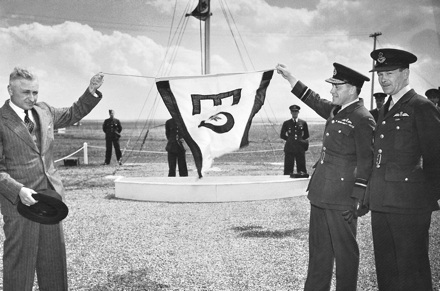 manager of the Malton Flying Training School (civilian operator of No 31 EFTS) and Air Vice-Marshal G R Housam RCAF, air officer commanding No 4 Training Command. Looking on is Squadron Leader R E Watts RAF, base commander. The date is May 27, 1943. |
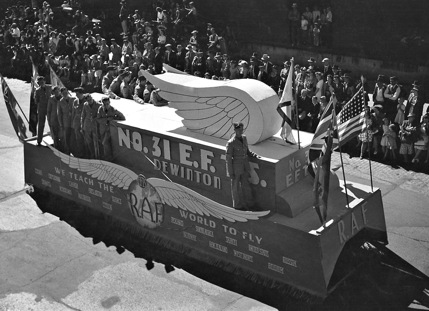 "We Teach the World to Fly" is the theme of the 1943 Calgary Stampede Parade float entered by No 31 EFTS De Winton. 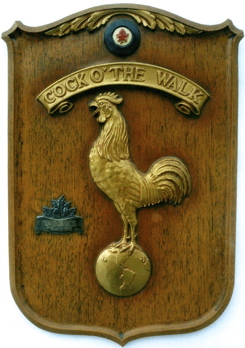 The Cock O' The Walk trophy was created to recognize the best pilot training school anywhere in the British Commonwealth. No 31 De Winton was the recipient of this top prize in the spring of 1943. |
The administrative staff, instructors and the commanding officer in particular, were key players in seeing that success was achieved. For most of its three and a half years of existence, Squadron Leader Ron Watts, who learned to fly with the RAF in Egypt in 1928, commanded De Winton. For several years prior to the war, Watts flew for a charter company in London but rejoined the RAF shortly after war was declared. Beyond the age of active aircrew, he was assigned to aircrew training, coming to Canada as chief flying instructor with the original RAF EFTS that had formed at Pearce, Alberta. "Watty" obviously knew how to run a training establishment. Not only was he responsible for the Commonwealth pupils on base, he apparently was adroit at working with pupils from much farther afield. De Winton became a receiving school for a great number of young airmen-to-be who had managed to escape from their homelands in Nazi-held Europe. As the Daily Diary of July 22, 1942 noted, "This unit now appears to be a veritable international brigade. The different nationalities are Belgium, Dutch, Danish, French, Czechoslovakian and Polish, to say nothing of British and Canadian." An entry on August 24 commented on a flying accident but also on the roots of a certain pilot cadet. "LAC Lohar, on an authorized flight, attempted to make a landing downwind on a ploughed field. The aircraft was a virtual write-off and LAC Lohar received injuries that proved to be more serious than was at first thought. He is now sitting up, however, encased in some form of plaster of Paris and can even walk quite well. It is believed the accident was contributed to by his inexperience. The pupil comes from Mauritius and visitors to Colonel Belcher Hospital in Calgary seem to be quite amazed that a colored boy can talk so intelligently and with an educated accent. This unit is certainly a veritable foreign legion and life is never dull." Another entry on September 13, 1942 commented on the arrival of a certain lieutenant of the Free French forces. "Lt Maurice Jaquelin, Free French untrained pilot, has reported for training. He has been in the French diplomatic service in Honolulu and is possessed not only of the diplomat's well-known charm but also of the typical diplomat's wardrobe, fully stocked and supremely immaculate. It is the despair of every poverty stricken Canadian and Englishman in the mess by who it has been fingered with awe not unmixed with envy." |
Training continued at every possible moment of the day and night with the commanding officer exhorting pupils and ground crew alike to do their utmost to pack in all the flying hours possible and as safely as possible. In his letter to base personnel in the Christmas 1942 issue of The Gremlin, the school's paper, Watts touched on these topics, among others. "During the past year, pupils from nearly twenty free nations have carried out their training here and today many of them are carrying to Hitler not a Christmas message but one which unfortunately he is best able to understand. . . Ground engineers must understand that they will continue to be badgered for aircraft during 1943 exactly as they have been hitherto (by this time I expect they are used to it). For my part I shall be content with 99 percent serviceability. I expect no department to be perfect. . . The past year has been marred by far too many flying accidents, the vast majority of which were due to deliberate breaches of flying regulations. Even the most dim-witted pupil will realize the orders laid down are for his own safety and he would be the first to complain if a ground engineer carried out an inspection on an aircraft in the same damn fool way in which he, the pupil, attempts to fly it. During the past four months alone, six wives or parents have received news of fatal accidents at this school, all of which could have been easily avoided and that news is hardly likely to add to their gaiety this Christmas. . . To everybody on the Station, I wish a Happy Christmas and the best of luck for 1943. May it prove to be the best year yet for De Winton."
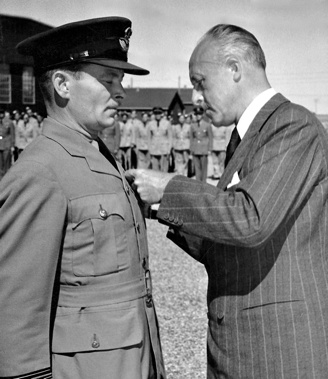 Squadron Leader R E Watts receives the Belgian Military Service Cross, First Class, from Baron Silvercruys, the Belgian Minister to Canada, in recognition of the service by Watts and No 31 De Winton in training Belgium pilots. |
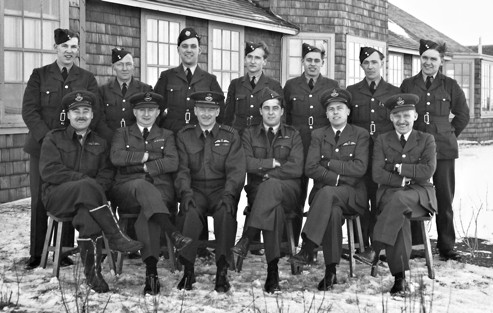 Squadron Leader R E Watts, front row, third from left, with Station administrative staff seated on aerodrome side of guard house. |
And 1943 did, indeed, turn out to be a banner year for this little flying school. In February, it was learned that the head of the Czechoslovakian Military Mission in Canada, Wing Commander J Ambros, would visit the school to confer Czechoslovakian Honorary Wings to Squadron Leader Watts and Flight Lieutenant R F Eastwood, chief flying instructor, the award having been made in London by General S Ingr, Czechoslovakian Minister of National Defense. The honor was in recognition of the high caliber of training received at De Winton by Czech students.
In April, a remarkable 10,000 hours of flying training were completed and the school was informed that it had been named the winner of the Efficiency Pennant for the most efficient EFTS in Canada during the first quarter of the year. In May, the school learned it had won the "Cock O' The Walk" trophy. The Calgary Herald quoted Air Vice-Marshal G R Housam, air officer commanding No. 4 Training Command, when he presented the Efficiency Pennant to the assembled personnel of De Winton. "Your station has been awarded the Minister's Pennant and in addition the "Cock O' The Walk" trophy as being the most efficient elementary flying training school in the British Commonwealth Air Training Scheme and the winning of the double award means much. You have achieved the highest standard of efficiency of any elementary school in the world and there is no other flying training organization compared to your own."
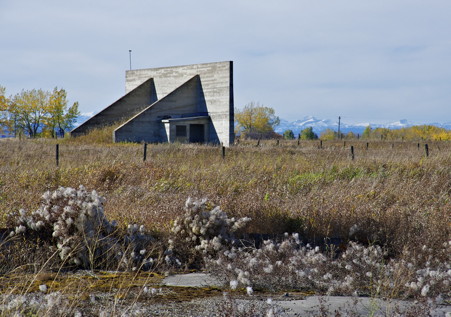 viewed from the remains of the floor of hangar number one. |
Despite the pressures of training, there were times when the base appeared nearly deserted. The July 5, 1943 daily diary entry explains one such occasion. "Peace descended upon De Winton. No roaring motors rent the air today with their full-throated song. No panoply of war disturbed the drowsy summer air. Has De Winton made a separate peace with the swastika-ed villains beyond the sea? Nay, indeed. Today is the wild west's big day and warriors from all around, from aerodromes and Indian reserves, from barracks and camps, assemble in the friendly foothills city (for the Calgary Stampede)." The station entered a float in the Stampede parade bearing the motto "We teach the world to fly" and displaying names of twenty countries represented at De Winton. |
On August 6, 1943, near the end of Squadron Leader Watts' command at De Winton, Baron Silvercruys, the Belgian Minister to Canada, accompanied by the Belgian Air Attaché Captain D Ducq and Allied Nations Liaison Officer Squadron Leader R A Kindrek, visited the school to interview Belgian students and to present to Watts the Belgian Military Service Cross, First Class, awarded by the Belgian government.
Within a year, RAF De Winton would close. But in the meantime, base instructors and ground personnel continued to produce outstanding elementary trained pilots who were then posted to advanced service flying training schools across the country. The international complexion of the school never faltered, especially when 84 French naval aviation trainees arrived in March 1944 from St Hubert, Quebec. The daily diary reported "The unit took on a strange appearance as these strangely garbed sailors with a typically nautical gait walked about the camp. We are thinking of calling ourselves HMS De Winton and the more serious minded are considering evening classes in the French language."
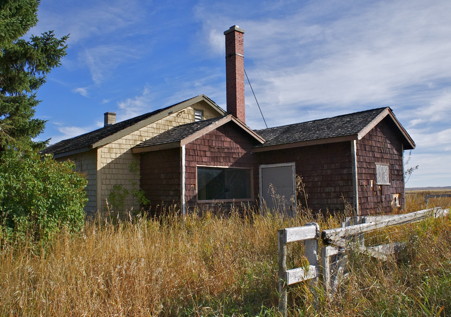 at the end of the spruce-lined entry road. |
The month of August 1944 saw the school winding down. Night flying ended on the evening of August 4. "There will be no night flying after tonight and it will indeed be strange to experience a night free from the murmur of the Cornell (training aircraft) speeding through the night though one wonders whether our cadets would entirely approve of the application of the words 'murmur' and 'speed' to the Cornell." The officers held their farewell dance on August 12. Most would be repatriated to Great Britain by way of No 31 Personnel Depot at Moncton, New Brunswick. "The mess had been ingeniously camouflaged to resemble an underground station in London. The good old London Transport red circle with destinations such as Knightsbridge, Lester Square and slogans such as 'Bass Builds Better Men' and 'What We Want is Wattney's,' all familiar to anyone who has known London's maze of underground railways, were much in evidence and everyone had a very good time." |
On August 26, the daily diary reported on the end of the school. "The Station is closed. It no longer exists on paper and the last cadets have gone. A few of the officers hang about but they are only here because they must await transportation to get them away. And so it is goodbye to De Winton No 31 and on to things to come."
To finish this very brief account of some of the life and times of No 31 Elementary Flying Training School, here is a poem written by LAC Rowley, nationality unknown. It is entitled "The Rookies."
The author, Tim Johnston, retired recently after serving nearly 30 years as an executive staff officer with the Alberta Teachers' Association. He has carried out considerable research into all the schools of the British Commonwealth Air Training Plan and shares what he has found freely with others interested in the Plan. Johnston now lives in Calgary with his wife Rebecca, an artist and retired teacher. He can be reached by email at [bcatp(at)hotmail.com]
Excerpts from the Daily Diary of No 31 EFTS are derived from microfilmed copies of the complete diary provided through the courtesy of the National Archives of Canada. Information on Squadron Leader Watts' personal history was provided by way of correspondence with his wife, Mrs Vera Watts, now deceased.
